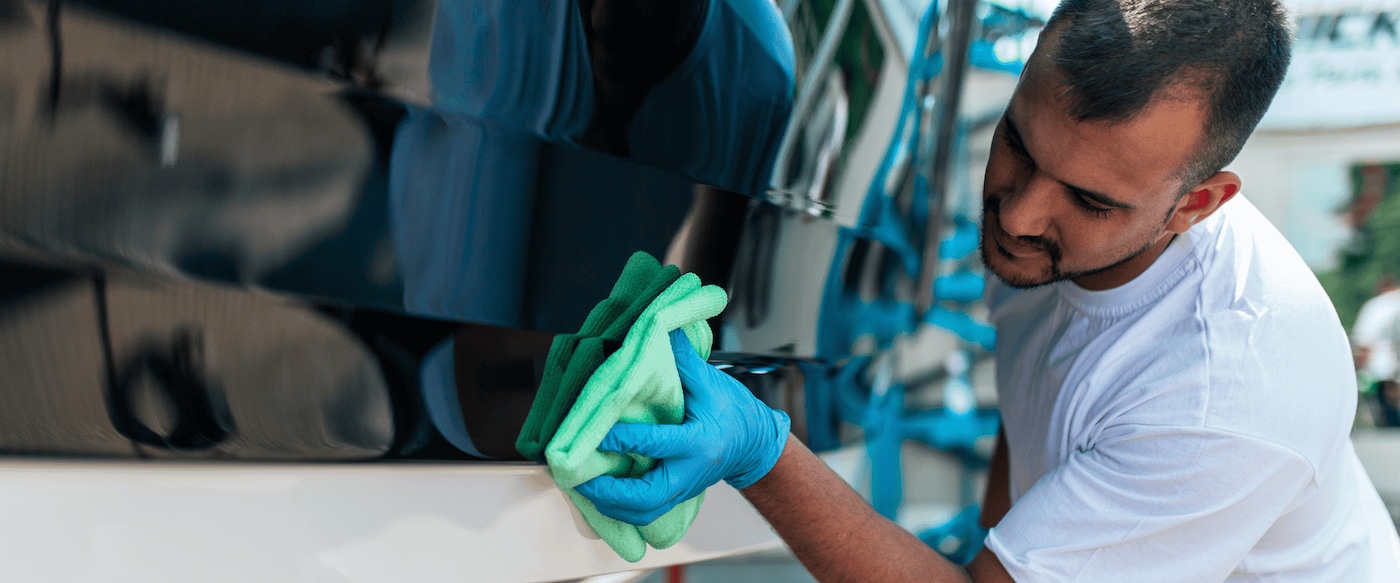
Fall Boat Maintenance Guide:
5 Essential Tips
Prepare Your Boat for the Off-Season
As the summer boating season draws to a close, here are five expert tips to help boat owners get ahead of fall maintenance and make next season’s launch easier.
Ray Tucker, Regional Technical Service Manager explains:
“Fall maintenance is a key opportunity to set the boat up for success next season. It’s the best time to inspect, clean and address any damage before it has a chance to worsen over the winter.
A spot of preventative maintenance now can go a long way toward avoiding costly repairs and time-consuming prep in the spring.”
1. Clean hulls carefully
Use a 25° or 15° pressure washer tip (never a 0° or rotary nozzle) to remove slime, algae, and marine growth. Take care around rubber components like outdrives to prevent damage.
After rinsing the hull, wash from the top down to eliminate waterline stains and surface grime. If cleaning tanks or bilges, always rinse any runoff thoroughly to protect the antifouling layer.
2. Assess above-water areas for refinishing needs
Inspect decks, hull sides, and other topside surfaces. If the paint or gelcoat appears chalky or dull, refinishing may be needed.
If repainting isn’t required, clean and polish thoroughly. Confirm that your topcoat system is compatible with polishing before proceeding.
For added protection, apply Awlgrip® Awlcare®, a non-yellowing polymer sealer that guards against environmental pollutants and winter weather.
3. Cover and protect topsides properly
After cleaning and sealing the topsides, cover the boat with a ventilated cover system to avoid moisture buildup over the winter.
Avoid letting shrink wrap or covers sit directly on painted or gelcoated surfaces, as this can cause micro-blistering.
Ensure all covers are securely fastened to prevent abrasion or flapping damage during storms or long-term storage.
Before wrapping up, don’t forget to inspect below the waterline.
4. Check below the waterline for coating and gear damage
Fall is the ideal time to evaluate hulls and underwater hardware for wear and tear.
Look for:
- Scratches from beaching
- Chipped or worn antifouling
- Damaged props or running gear
- Rust or pitting on metal components (an early sign of electrolysis)
If your hull coating is failing extensively, particularly if it's over 8 years old, it may be time to strip and recoat.
Use a barrier coat like Interlux® InterProtect to protect against water intrusion and corrosion.
5. Recoat with a multi-season antifouling product
Autumn is a great time to apply multi-seasonal antifouling for lasting protection and a more flexible spring launch.
Recommended products include:
These high-performance coatings are ideal for boats that are hauled and relaunched frequently or remain in the water for extended periods.
Get ahead now for a smoother Spring
By following these expert tips, boat owners can reduce the workload in spring and ensure their vessels are well protected through the off-season. When unsure or not comfortable with following the suggested tips, consider consulting a boatyard or professional applicator.